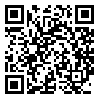Volume 17, Issue 17 (4-2019)
RSMT 2019, 17(17): 47-60 |
Back to browse issues page
Download citation:
BibTeX | RIS | EndNote | Medlars | ProCite | Reference Manager | RefWorks
Send citation to:



BibTeX | RIS | EndNote | Medlars | ProCite | Reference Manager | RefWorks
Send citation to:
Lenjannejadian S, Reisi J. A new activity based balance index in elite adolescent soccer players. RSMT 2019; 17 (17) :47-60
URL: http://jsmt.khu.ac.ir/article-1-364-en.html
URL: http://jsmt.khu.ac.ir/article-1-364-en.html
, jalil_reisi@yahoo.com
Abstract: (8835 Views)
Balance is a complex concept, especially when one wants to do complex motor skills. Therefore, the balance during activity is more important than the static and dynamic balance that is performed without the skill. The aim of this study was to introduce a new activity-based balance index of elite soccer players. 27 young soccer players (12-14 years) whom participated in Iranian premier league were selected. To assess their balance, activity and skill, four functional tests consisting one leg stance, dynamic Y balance, running and dribbling tests were administered. During these tests, besides their relative scores, the acceleration of body center was also recorded using an accelerometer and a new activity-based balance index (ABI) were calculated from these available data. The Results showed a significant positive correlation between ABI and both static and dynamic balance scores(r=0.6, p=0.002). Also, a significant negative correlation was found between ABI and dribbling scores(r=-0.45, p=0.026), which could be interpreted as the necessity of agility of the players. It could be concluded that this new activity-based balance index was found to be successful for evaluating both the balance and the skill level of soccer players.
Type of Study: Research |
Received: 2019/10/23 | Accepted: 2019/10/23 | Published: 2019/10/23
Received: 2019/10/23 | Accepted: 2019/10/23 | Published: 2019/10/23
References
1. McGinnis, P. (2013). Biomechanics of sport and exercise: Human Kinetics.
2. LeVeau, B.F. (2010). Biomechanics of human motion: basics and beyond for the health professions: Slack Incorporated.
3. Seimetz, C., Tan, D., Katayama, R., Lockhart, T. (2012). A comparison between methods of measuring postrual stability: force plates versus accelerometers. Biomedical Sciences Instrumentation. 48:386-92.
4. Bressel, E., Yonker, J.C., Kras, J., Heath, E.M. (2007). Comparison of static and dynamic balance in female collegiate soccer, basketball, and gymnastics athletes. Journal of Athletic Training. 42(1):42-6.
5. Matsuda, S., Demura, S., Uchiyama, M. (2008). Centre of pressure sway characteristics during static one-legged stance of athletes from different sports. Journal of Sports Sciences. 26(7):775-9. [DOI:10.1080/02640410701824099]
6. Plisky, P.J., Gorman, P.P., Butler, R.J., Kiesel, K.B., Underwood, F.B., Elkins, B. (2009). The reliability of an instrumented device for measuring components of the star excursion balance test. North American Journal of Sports Physical Therapy. 4(2):92-9.
7. Karimi, M.T. (2016). Stability Analysis Theories, Strategies and Mechanisms of Evaluation. 117 p.
8. Winter, D.A. (1995). Human balance and posture control during standing and walking. Gait & Posture. 3(4):193-214. [DOI:10.1016/0966-6362(96)82849-9]
9. Mayagoitia, R.E., Lötters, J.C., Veltink, P.H., Hermens, H. (2002). Standing balance evaluation using a triaxial accelerometer. Gait & Posture. 16(1):55-9. [DOI:10.1016/S0966-6362(01)00199-0]
10. Scott, B.R., Lockie, R.G., Knight, T.J., Clark, A.C., Janse de Jonge X.A.K. (2013). A comparison of methods to quantify the in-season training load of professional soccer players. International Journal of Sports Physiology and Performance. 8(2):195-202. [DOI:10.1123/ijspp.8.2.195]
11. Naunheim, R.S., Standeven, J., Richter, C., Lewis. (2000). Surgery AC. Comparison of impact data in hockey, football, and soccer. The Journal of Trauma. 48(5):938-41. [DOI:10.1097/00005373-200005000-00020]
12. Jarning, J.M., Mok, K.M., Hansen, B.H., Bahr, R. (2015). Application of a tri-axial accelerometer to estimate jump frequency in volleyball. Sports Biomechanics. 14(1):95-105. [DOI:10.1080/14763141.2015.1027950]
13. Montgomery, P.G., Pyne, D.B., Minahan, C.L. (2010). The physical and physiological demands of basketball training and competition. International Journal of Sports Physiology and Performance. 5(1):75-86. [DOI:10.1123/ijspp.5.1.75]
14. Kinugasa, T., Kilding, A.E. (2009). A comparison of post-match recovery strategies in youth soccer players. The Journal of Strength & Conditioning Research. 23(5):1402-7. [DOI:10.1519/JSC.0b013e3181a0226a]
15. Söderman, K., Alfredson, H., Pietilä, T., Werner, S. (2001). Risk factors for leg injuries in female soccer players: a prospective investigation during one out-door season. Knee Surgery, Sports Traumatology, Arthroscopy. 9(5):313-21. [DOI:10.1007/s001670100228]
16. Alentorn-Geli, E., Myer, G.D., Silvers, H.J., Samitier, G., Romero, D., Lázaro-Haro, C., Ramón, C. (2009). Prevention of non-contact anterior cruciate ligament injuries in soccer players. Part 1: Mechanisms of injury and underlying risk factors. Knee Surgery, Sports Traumatology, Arthroscopy. 17(7):705-29. [DOI:10.1007/s00167-009-0813-1]
17. Murphy, D., Connolly, D., Beynnon, B. (2003). Risk factors for lower extremity injury: a review of the literature. British Journal of Sports Medicine. 37(1):13-29. [DOI:10.1136/bjsm.37.1.13]
18. Dolan, K. (2013). Reactive agility, core strength, balance, and soccer performance: Ithaca College Theses.
19. Paillard, T., Noe, F., Riviere, T., Marion, V., Montoya, R., Dupui, P. (2006). Postural performance and strategy in the unipedal stance of soccer players at different levels of competition. Journal of Athletic Training. 41(2):172-6.
20. Barron, D.J., Atkins, S., Edmundson, C., Fewtrell, D. (2014). Accelerometer derived load according to playing position in competitive youth soccer. International Journal of Performance Analysis in Sport. 14(3):734-43. [DOI:10.1080/24748668.2014.11868754]
21. Reilly, T., Williams, A.M., Nevill, A., Franks, A. (2000). A multidisciplinary approach to talent identification in soccer. Journal of Sports Sciences. 18(9):695-702. [DOI:10.1080/02640410050120078]
22. Ré, A.H., Corrêa, U.C., Böhme, M.T. (2010). Anthropometric characteristics and motor skills in talent selection and development in indoor soccer. Perceptual and Motor Skills. 10(3):916-30. [DOI:10.2466/pms.110.3.916-930]
23. Oliver, G.D., Brezzo, R.D. (2009) Functional balance training in collegiate women athletes. The Journal of Strength & Conditioning Research. 23(7):2124-9. [DOI:10.1519/JSC.0b013e3181b3dd9e]
24. Gabbett, T., Benton, D. (2009). Reactive agility of rugby league players. Journal of Science and Medicine in Sport. 12(1):212-4. [DOI:10.1016/j.jsams.2007.08.011]
Send email to the article author
| Rights and permissions | |
 |
This work is licensed under a Creative Commons Attribution-NonCommercial 4.0 International License. |







